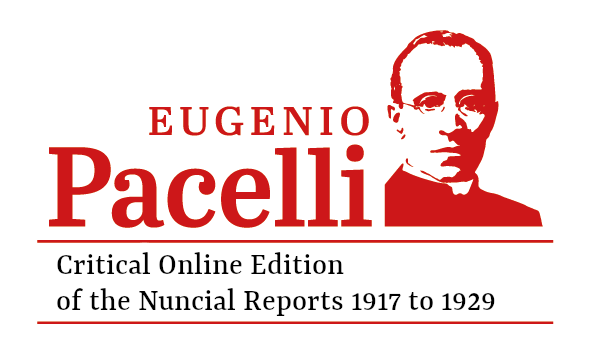Nunciature
In the course of the early modern period, a permanent papal diplomacy developed. Apart from the nunciature at the imperial court, there was a nunciature in Cologne from 1584 to 1794. On 14 February 1785, an apostolic nunciature was then established in Munich, which remained vacant during the Napoleonic Era from 1800 to 1818. Unlike the nunciature in Cologne, however, the Munich nunciature was reoccupied. Although it was only legally responsible for the Kingdom of Bavaria, it de facto developed into a "Reich Nunciature" during the 19th century.
Under Eugenio Pacelli, the Munich nunciature became the hub of the Vatican's European and global policy. Since the Holy See's diplomatic relations with numerous governments, such as Italy, Spain and France, had been severed long time ago, the Munich nunciature became of central importance, especially after the outbreak of the First World War.
Already during the war, there were attempts to accredit Pacelli not only to Bavaria but also to the German Reich. However, these plans were not implemented until the years of the Weimar Republic. On 16 April 1920, Pope Benedict XV additionally appointed Pacelli as nuncio to the Reich in the newly established Berlin nunciature. Pacelli moved there on 18 August 1925 after the conclusion of the Concordat with Bavaria. It was only then that Alberto Vassallo di Torregrossa, who had already been appointed nuncio in Munich in November 1920, assumed office; in 1933/34 the Munich nunciature was dissolved by the National Socialists. In addition to the Reich Pacelli was accredited to the Free State of Prussia on 24 June 1925 in order to negotiate a concordat. De facto, Pacelli was nuncio in Germany until December 1929 – with the exception of Bavaria.
